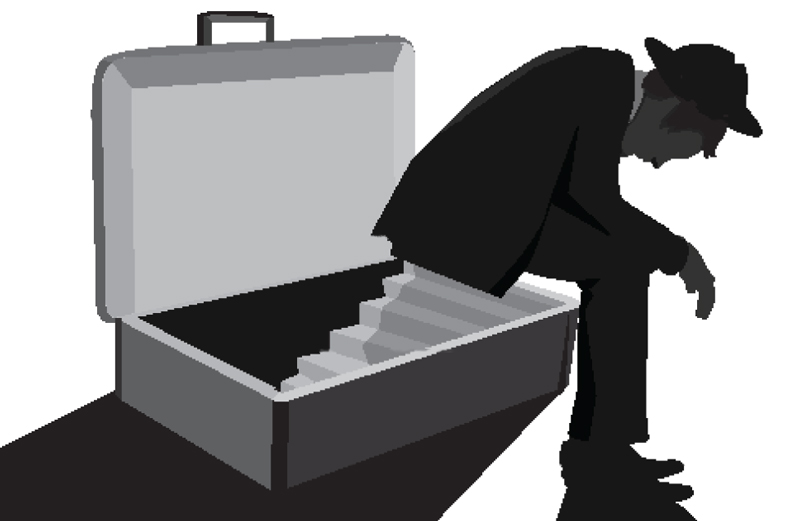The Complexities of the "American Dream"
As the daughter of immigrant parents, my own life reflects the complexities of the “American Dream”. A common dinner-table conversation theme of ours includes my brother and I’s futures. It’s clear that our view differs from our parents’, which leads to heated discussions and slammed doors. But still, my parents are relatively supportive of anything I want to do as long as I’m passionate about it.
The "American Dream" is a concept that has been central to the American identity for decades. It represents the idea that through hard work and determination, anyone can achieve success and prosperity. However, as society has evolved and diversified, the perception of the “American Dream” has also changed. Cultural and generational divides influence perception of the "American Dream", as contrasted in Death of a Salesman and The Joy Luck Club, and these differences put immense strains on familial relationships which can be compared in the two works.

On one hand, Death of a Salesman explores the disposability of even “true” American men who are working hard to achieve the “American Dream”. Here, “Miller makes a statement about the social and economic corruption of morality, exposing the reality of capitalism and free enterprise. America is not the land of easy opportunity, and affability does not automatically determine social position” (Hacht 10). Willy embodies the perfect actualization of the “American Dream”: he works hard, is a family man, and is focused on advancing his career— he has dedicated his life to the pursuit of the “American Dream”. He is a salesman who has always believed that success and prosperity can be achieved through hard work and determination. However, American society and the business place is against him, and as he grows older, he realizes that his belief in the “American Dream” is misguided, and that his life has been a failure. He quickly learns that America is not a land of easy opportunity, but rather a popularity contest. As he strives to become the most likable individual by using deceptive shortcuts, he only falls into deeper failure. Willy's perception of the “American Dream” is shaped by his cultural background, as he is a white, middle-class man who grew up in the United States in the early 20th century. His belief in the “American Dream” is rooted in the idea that anyone can achieve success and prosperity through hard work, but this is not the case in reality. Willy's perception of the “American Dream” puts immense strain on his familial relationships, as his failure to achieve success and prosperity leads to disappointment and frustration for himself and his family. His perception of the charm necessary to move ahead in his career greatly differs from the Asian-American perception and journey.

In contrast, The Joy Luck Club describes the struggle of assimilation to the “American Dream” clashing with the culture and identity of immigrants. The book tells the story of four Chinese mothers and their American-born daughters, who have grown up with different cultural backgrounds and different perceptions of the “American Dream”. The mothers, who grew up in China, have a very different perception of the “American Dream” than their daughters, who have grown up in the United States. The mothers see the “American Dream” as a way to escape poverty and hardship, while their daughters see it as a way to achieve success and prosperity. This difference in perception puts immense strain on their familial relationships, as the mothers and daughters struggle to understand and accept each other's cultural background and perspectives. Even in reality, “Asian Americans are still often asked, "Where are you from?" proving the complex issues surrounding a truly American identity remain [...] fighting to achieve the American dream while portraying a real picture of what it means to have a rich cultural heritage that is both American and Asian” (Hacht 557). The immigrant perception of this seemingly unreachable dream is vastly different from the one seen in Death of a Salesman. Instead of utilizing likeability and charm to achieve a higher status in the workplace, in an Asian-American culture, the “American Dream” is often seen as succeeding in America while keeping in touch with one's heritage.

The difference in perception of the “American Dream” between generations causes tension and barriers between family members. The cultural and generational divides in Death of a Salesman and The Joy Luck Club show how the “American Dream” can be a source of disappointment and frustration for those who are unable to achieve it. Willy Loman's belief in the “American Dream” leads him to disappointment and frustration, as he is unable to achieve success and prosperity. He then reflects this regret upon his sons which also come short of living up to his own impossible standards. Similarly, the mothers of the Joy Luck Club are disappointed that their daughters are unable to fully understand and embrace their cultural background, which they see as an essential part of achieving the “American Dream”. This can be true for all cultures like the Asian-American heritage in The Joy Luck Club: “The Chinese mothers fear the end of Chinese tradition in their families. Their American-born daughters hide their Chinese heritage and think like Americans. While the Chinese mothers want their daughters to enjoy the benefits of being Americans, they do not want them to forget their roots” (Telgen 211). The mothers of the Joy Luck Club are picky in their daughters finding the right balance of Chinese and American identity to fit into their lives. This results in their daughters often doing things they don’t agree with or can’t come to terms with, which ensues in a more complicated relationship where the daughter or mother don’t fully understand one another. Similarly, in Death of a Salesman: “The play focuses on Willy Loman, a hopeless, struggling salesman, who still sees the American dream within easy reach. [...] Despite his shortcomings, Willy still blindly believes in the rags-to-riches notion and tells his sons they can achieve everything he did not” (Hacht 10). Willy forces his view of the “American Dream” onto his sons. Biff and Happy want to live free lives with no strict career path to tie them down, but Willy thinks the only way for success is to become the best salesman. This creates barriers in his relationships with his sons, his wife, and even himself.
The “American Dream” puts a strain on all familial relationships, regardless of a difference in culture. In The Joy Luck Club, “The American-born daughters are ambivalent about their Chinese background. While they eat Chinese foods and celebrate Chinese traditions, they want their Chinese heritage to remain at home. They make American choices when they are in public and cringe in embarrassment when their mothers speak in their broken English. Worst of all, the American daughters do not see the importance of "joy luck"; to them, it is not even a word. They regard the Joy Luck Club as a "shameful Chinese custom."” (Telgen 211). And in Death of a Salesman, “The play emphasizes the need to value heritage and family, particularly in the face of industrialization, which brings with it social decline and personal separation” (Hacht 9). Even with an American background, the Lomans have very different views of success. In the eyes of Biff and Happy, the “American Dream” is a more modern, free-spirited way of life than the finite set-path their father has set for them.

The idea of the “American Dream” is different in everyone’s minds regardless of culture, generation, and environment, so the pressure to achieve it is completely impossible for every subjective individual. The whole perception of the “American Dream” can be more harmful than helpful when pushing someone to succeed. It is shaped by cultural and generational divides and these differences in perception can put immense strains on familial relationships, as seen in the two works. Willy Loman's belief in the “American Dream” leads him to disappointment and frustration, while the mothers in the Joy Luck Club are disappointed that their daughters are unable to fully understand and embrace their cultural background. The “American Dream” is a powerful concept, but it can also be a source of disappointment and frustration for those who are unable to achieve it. So the next time we are having fierce arguments at the dinner table about our futures, we should stop to think about the underlying causes separating our perspectives with our parents’ and even any other unique individual’s, and the futile feuds the “American Dream” can cause in our families. Because for a reality check, the "American Dream" is just a dream after all, and sometimes we all need a wakeup call from some seriously impossible fantasies.

Works Cited
"The American Dream: Overview." Literary Themes for Students: The American Dream, edited by Anne Marie Hacht, vol. 1, Gale, 2007, pp. 3-23. Literary Themes for Students. Gale eBooks, link.gale.com/apps/doc/CX2895300013/GVRL?u=lom_troyhs&sid=bookmark-GVRL&xid=88579dfc. Accessed 9 Jan. 2023.
"The Asian American Dream." Literary Themes for Students: The American Dream, edited by Anne Marie Hacht, vol. 2, Gale, 2007, pp. 552-57. Literary Themes for Students. Gale eBooks, link.gale.com/apps/doc/CX2895300061/GVRL?u=lom_troyhs&sid=bookmark-GVRL&xid=e77bdf6a. Accessed 9 Jan. 2023.
"The Joy Luck Club." Novels for Students, edited by Diane Telgen, vol. 1, Detroit, MI, Gale, 1997, pp. 203-21. Gale eBooks, link.gale.com/apps/doc/CX2591400020/GVRL?u=lom_troyhs&sid=bookmark-GVRL&xid=6e9823bd. Accessed 9 Jan. 2023.
Miller, Arthur. Death of a Salesman. Penguin Classics, 2000.
Tan, Amy. The Joy Luck Club. Penguin Press, 2012.


Comments
Post a Comment